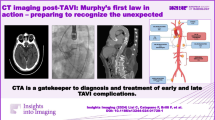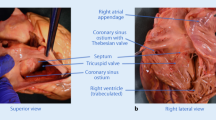Abstract
Pulmonary arteriovenous malformations (PAVMs) or fistulas are rare direct pathological connections between pulmonary arterial and venous circulation. Most of PAVMs are congenital and closely associated with hereditary hemorrhagic telangiectasia, but acquired PAVMs have also been described in the literature. Diagnosis of PAVMs is a priority for clinicians, in order to prevent potentially fatal events such as cerebrovascular stroke, systemic septic embolization, hemoptysis and hemothorax. In this scenario, the radiologist plays a key role in both diagnostic and therapeutic workups of PAVMs: Chest X-ray, computed tomography and magnetic resonance are effective tools for PAVMs identification and confirmation of the suspected diagnosis. Furthermore, imaging modalities provide most of the elements for PAVMs classification according to their angioarchitecture (simple and complex) and help the clinicians in establishing which lesion requires prompt treatment and which one will benefit of imaging follow-up alone. Endovascular management of PAVMs has grown up as the first-line treatment in respect of surgery during last decades, showing lower risk of intra- and post-procedural complications and offering a wide number of treatment options and materials, ensuring effective management in virtually any clinical situation; interventional treatment aims to exclude PAVMs from pulmonary circulation, and specific technique and embolic agents should be selected according to pre-treatment imaging, in order to obtain the best procedural outcome. This paper proposes a review of the clinical and radiological features that a radiologist needs to know for PAVMs diagnosis and proper management, also showing an overview of the most common endovascular treatment strategies and embolization materials.











Similar content being viewed by others
References
Churton T (1897) Leeds and west-riding medico-chirurgical society: multiple aneurysms of pulmonary artery. Brit Med J 1:1223
Gossage JR, Kani G (1998) Pulmonary arteriovenous malformations. Am J Respir Crit Care Med 158:643–661
Khurshid I, Downie GH (2002) Pulmonary arteriovenous malformation. Postgrad Med J 78:191–197
Holzer RJ et al (2016) Pulmonary arteriovenous malformations and risk of stroke. Cardiol Clin 34:241–246
Naito J et al (2017) Pulmonary arteriovenous malformations complicated by splenic infarction and abscess. Respirol Case Rep 5:e00254
Brothers M, Peeler B, Paolillo J (2017) Renal thromboembolism from a large pulmonary artery to a pulmonary vein fistula in an asymptomatic adolescent. Cardiol Young 27:199–201
Elmali M, Akan H, Findik S et al (2008) Hereditary hemorrhagic telangiectasia associated with pulmonary arteriovenous malformations presenting as hemothorax. J Thorac Imaging 23:295–297
Iqbal M, Leonard JR, Harry NS et al (2000) Pulmonary arteriovenous malformations: a clinical review. Postgrad Med J 76:390–394
de Gussem EM, Lausman AY, Beder AJ et al (2014) Outcomes of pregnancy in women with hereditary hemorrhagic telangiectasia. Obstet Gynecol 123:514–520
Carette MF, Nedelcu C, Tassart M et al (2009) Imaging of hereditary hemorrhagic telangiectasia. Cardiovasc Intervent Radiol 32:745–757
van Gent MW, Post MC, Snijder RJ, Westermann CJ et al (2010) Real prevalence of pulmonary right-to-left shunt according to genotype in patients with hereditary hemorrhagic telangiectasia: a transthoracic contrast echocardiography study. Chest 138:833–839
Ruiz-Llorente L, Gallardo-Vara E, Rossi E et al (2017) Endoglin and alk1 as therapeutic targets for hereditary hemorrhagic telangiectasia. Expert Opin Ther Targets 21:933–947
Gallione C, Aylsworth AS, Beis J et al (2010) Overlap** spectra of SMAD4 mutations in juvenile polyposis (JP) and JP-HHT syndrome. Am J Med Genet A 152A:333–339
Gallione CJ, Repetto GM, Legius E et al (2004) A combined syndrome of juvenile polyposis and hereditary haemorrhagic telangiectasia associated with mutations in MADH4 (SMAD4). Lancet 363:852–859
Ryan DJ, O’Connor TM, Murphy MM, Brady AP (2017) Follow-up interval for small untreated pulmonary arteriovenous malformations in hereditary haemorrhagic telangiectasia. Clin Radiol 72:236–241
Handa T, Okano Y, Nakanishi N et al (2014) BMPR2 gene mutation in pulmonary arteriovenous malformation and pulmonary hypertension: a case report. Eur Respir J 52:195–198
Matsutani N, Dejima H, Takahashi Y et al (2016) Birt-Hogg–Dube syndrome accompanied by pulmonary arteriovenous malformation. J Thorac Dis 8:E1187–E1189
Inami T, Yokoyama S, Seino Y, Mizuno K (2013) Unique case of acquired pulmonary arteriovenous malformation developed by calcific constrictive pericarditis. BMJ Case Rep 15:2013
Ghersin E, Hildoer DJ, Fishman JE (2010) Pulmonary arteriovenous fistula within a pulmonary cyst-evaluation with CT pulmonary angiography. Br J Radiol 83:e114–e117
Sharma A, Gulati GS, Parakh N, Aggarwal A (2016) Pulmonary arteriovenous malformation in chronic thromboembolic pulmonary hypertension. Indian J Radiol Imaging 26:195–197
Esplin MS, Varner MW (1997) Progression of pulmonary arteriovenous malformation during pregnancy: case report and review of the literature. Obstet Gynecol Surv 52:248–253
Shovlin CL, Sodhi V, McCarthy A et al (2008) Estimates of maternal risks of pregnancy for women with hereditary haemorrhagic telangiectasia (Osler–Weber–Rendu syndrome): suggested approach for obstetric services. BJOG 115:1108–1115
White RI Jr, Pollak JS, Wirth JA (1996) Pulmonary arteriovenous malformations: diagnosis and transcatheter embolotherapy. J Vasc Interv Radiol 7:787–804
Gill SS, Roddie ME, Shovlin CL, Jackson JE (2015) Pulmonary arteriovenous malformations and their mimics. Clin Radiol 70:96–110
Faughnan ME, Palda VA, Garcia-Tsao G et al (2011) International guidelines for the diagnosis and management of hereditary haemorrhagic telangiectasia. J Med Genet 48:73–87
Remy-Jardin M, Dumont P, Brillet PY et al (2006) Pulmonary arteriovenous malformations treated with embolotherapy: helical CT evaluation of long-term effectiveness after 2–21-year follow-up. Radiology 239:576–585
Khoja AM, Jalan RK, Jain DL, Kajale OV (2016) Osler–Weber–Rendu disease: a rare cause of recurrent hemoptysis. Lung India 33:313–316
Shovlin CL, Guttmacher AE, Buscarini E et al (2009) Diagnostic criteria for hereditary hemorrhagic telangiectasia (Rendu–Osler–Weber syndrome). Am J Med Genet 91:66–67
Shovlin CL (2014) Pulmonary arteriovenous malformations. Am J Respir Crit Care Med 190:1217–1228
Swanson KL, Prakash UB, Stanson AW (1999) Pulmonary arteriovenous fistulas: Mayo Clinic experience, 1982-1997. Mayo Clin Proc 74:671–680
Cottin V, Plauchu H, Bayle JY et al (2004) Pulmonary arteriovenous malformations in patients with hereditary hemorrhagic telangiectasia. Am J Respir Crit Care Med 169:994–1000
Cartin-Ceba R, Swanson KL, Krowka MJ (2013) Pulmonary arteriovenous malformations. Chest 144:1033–1044
European guidelines on quality criteria for diagnostic radiographic images. http://www.sprmn.pt/pdf/EuropeanGuidelineseur16260.pdf. Accessed Aug 24 2018
Shovlin CL, Condliffe R, Donaldson JW et al (2017) British thoracic society clinical statement on pulmonary arteriovenous malformations. Thorax 72:1154–1163
Cummings KW, Bhalla S (2010) Multidetector computed tomographic pulmonary angiography: beyond acute pulmonary embolism. Radiol Clin North Am 48:51–65
Vase P, Holm M, Arendrup H (1985) Pulmonary arteriovenous fistulas in hereditary hemorrhagic telangiectasia. Acta Med Scand 218:105–109
Lacombe P, Lacout A, Marcy PY et al (2013) Diagnosis and treatment of pulmonary arteriovenous malformations in hereditary hemorrhagic telangiectasia: an overview. Diagn Interv Imaging 94:835–848
Nawaz A, Litt HI, Stavropoulos SW et al (2008) Digital subtraction pulmonary arteriography versus multidetector CT in the detection of pulmonary arteriovenous malformations. J Vasc Interv Radiol 19:1582–1588
Cummings KW, Bhalla S (2015) Pulmonary vascular diseases. Clin Chest Med 36:235–248
Hanneman K, Faughnan ME, Prabhudesai V (2014) Cumulative radiation dose in patients with hereditary hemorrhagic telangiectasia and pulmonary arteriovenous malformations. Can Assoc Radiol J 65:135–140
Parra JA, Cuesta JM, Zarrabeitia R et al (2016) Screening pulmonary arteriovenous malformations in a large cohort of Spanish patients with hemorrhagic hereditary telangiectasia. Int J Cardiol 218:240–245
Inarejos Clemente EJ, Ratjen F, Manson DE (2016) Utility of MDCT MIP postprocessing reconstruction images in children with hereditary hemorrhagic telangiectasia. J Comput Assist Tomogr 40:375–379
Lell MM, May M, Deak P et al (2011) High-pitch spiral computed tomography: effect on image quality and radiation dose in pediatric chest computed tomography. Invest Radiol 46:116–123
Balci NC, Yalçin Y, Tunaci A, Balci Y (2003) Assessment of the anomalous pulmonary circulation by dynamic contrast-enhanced MR angiography in under four seconds. Magn Reson Imaging 21:1–7
Hamamoto K, Matsuura K, Chiba E et al (2016) Feasibility of non-contrast-enhanced MR angiography using the time-SLIP technique for the assessment of pulmonary arteriovenous malformation. Magn Reson Med Sci 15:253–265
Schneider G, Uder M, Koehler M et al (2008) MR angiography for detection of pulmonary arteriovenous malformations in patients with hereditary hemorrhagic telangiectasia. AJR Am J Roentgenol 190:892–901
Shimohira M, Kawai T, Hashizume T et al (2015) Reperfusion rates of pulmonary arteriovenous malformations after coil embolization: evaluation with time-resolved MR angiography or pulmonary angiography. J Vasc Interv Radiol 26:856–864
Kawai T, Shimohira M, Kan H et al (2014) Feasibility of time-resolved MR angiography for detecting recanalization of pulmonary arteriovenous malformations treated with embolization with platinum coils. J Vasc Interv Radiol 25:1339–1347
Maki DD, Siegelman ES, Roberts DA et al (2001) Pulmonary arteriovenous malformations: three-dimensional gadolinium-enhanced MR angiography-initial experience. Radiology 219:243–246
Nagano M, Ichinose J, Sasabuchi Y, Nakajima J, Yasunaga H (2017) Surgery versus percutaneous transcatheter embolization for pulmonary arteriovenous malformation: analysis of a national inpatient database in Japan. J Thorac Cardiovasc Surg 154:1137–1143
Dutton JA, Jackson JE, Hughes JM et al (1995) Pulmonary arteriovenous malformations: results of treatment with coil embolization in 53 patients. AJR Am J Roentgenol 165:1119–1125
Sandeep V, Kathleen RT, Jarvis C (2008) An overview of embolic agents. Semin Intervent Radiol 25:204–215
White IR (2007) Pulmonary arteriovenous malformations: how do I embolize? Tech Vasc Interv Radiol 10:283–290
Tal MG, Saluja S, Henderson KJ et al (2002) Vein of Galen technique for occluding the aneurysmal sac of pulmonary arteriovenous malformations. J Vas Interv Radiol 13:1261–1264
Masayuki K, Hiroshi K, Satoshi G, Yusuke T, Haruo W, Noriyuki M (2012) Giant high-flow type pulmonary arteriovenous malformation: coil embolization with flow control by balloon occlusion and an anchored detachable coil. Korean J Radiol 13:111–114
Vikash P, Raymond PC, Marie EF (2004) Embolotherapy of pulmonary arteriovenous malformations: efficacy of platinum versus stainless steel coils. J Vasc Interv Radiol 15:153–160
Lopera JE (2015) The Amplatzer vascular plug: review of evolution and current applications. Semin Intervent Radiol 32:356–369
Rabellino M, Serra M, Peralta O et al (2014) Early experience with the AMPLATZER vascular plug IV for the occlusion of pulmonary arteriovenous malformations. J Vasc Interv Radiol 25:1333–1337
Barrett L, Brown NI, Joseph VP (2018) First use of micro vascular plugs in Australia: endovascular treatment of pulmonary arteriovenous malformation. J Med Imaging Radiat Oncol 62:72–76
Conrad MB, Ishaque BM, Surman AM et al (2015) Intraprocedural safety and technical success of the MVP micro vascular plug for embolization of pulmonary arteriovenous malformations. J Vasc Interv Radiol 26:1735–1739
Corvino F, Silvestre M, Cervo A, Giurazza F, Corvino A, Maglione F (2016) Endovascular occlusion of pulmonary arteriovenous malformations with the ArtVentive endoluminal occlusion system™. Diagn Interv Radiol 22:463–465
Takahashi K, Tanimura K, Honda M et al (1999) Venous sac embolization of pulmonary arteriovenous malformation: preliminary experience using interlocking detachable coils. Cardiovasc Intervent Radiol 22:210–213
Dinkel HP, Triller J (2002) Pulmonary arteriovenous malformations: embolotherapy with superselective coaxial catheter placement and filling of venous sac with Guglielmi detachable coils. Radiology 223:709–714
Kajiwara K, Urashima M, Yamagami T et al (2014) Venous sac embolization of pulmonary arteriovenous malformation: safety and effectiveness at mid-term follow-up. Acta Radiol 55:1093–1098
Hayashi S, Baba Y, Senokuchi T, Nakajo M (2012) Efficacy of venous sac embolization for pulmonary arteriovenous malformations: comparison with feeding artery embolization. J Vasc Interv Radiol 23:1566–1577
Bélanger C, Chartrand-Lefebvre C, Soulez G et al (2016) Pulmonary arteriovenous malformation (PAVM) reperfusion after percutaneous embolization: sensitivity and specificity of non-enhanced CT. Eur J Radiol 85:150–157
Stein EJ, Chittams JL, Miller M, Trerotola SO (2017) Persistence in coil-embolized pulmonary arteriovenous malformations with feeding artery diameters of 3 mm or less: a retrospective single-center observational study. J Vasc Interv Radiol 28:442–449
Gamondès D, Si-Mohamed S, Cottin V et al (2016) Vein diameter on unenhanced multidetector CT predicts reperfusion of pulmonary arteriovenous malformation after embolotherapy. Eur Radiol 26:2723–2729
Kawai N, Sato M, Minamiguchi H et al (2014) Percutaneous sclerotherapy of a fingertip high-flow arteriovenous malformation with ethanol plus lipiodol. J Vasc Interv Radiol 25:1477–1478
Author information
Authors and Affiliations
Corresponding author
Ethics declarations
Conflict of interest
The authors declare that they have no conflicts of interest.
Ethical approval
This article does not contain any studies with human participants or animals performed by any of the authors.
Additional information
Publisher's Note
Springer Nature remains neutral with regard to jurisdictional claims in published maps and institutional affiliations.
Rights and permissions
About this article
Cite this article
Contegiacomo, A., del Ciello, A., Rella, R. et al. Pulmonary arteriovenous malformations: what the interventional radiologist needs to know. Radiol med 124, 973–988 (2019). https://doi.org/10.1007/s11547-019-01051-7
Received:
Accepted:
Published:
Issue Date:
DOI: https://doi.org/10.1007/s11547-019-01051-7




